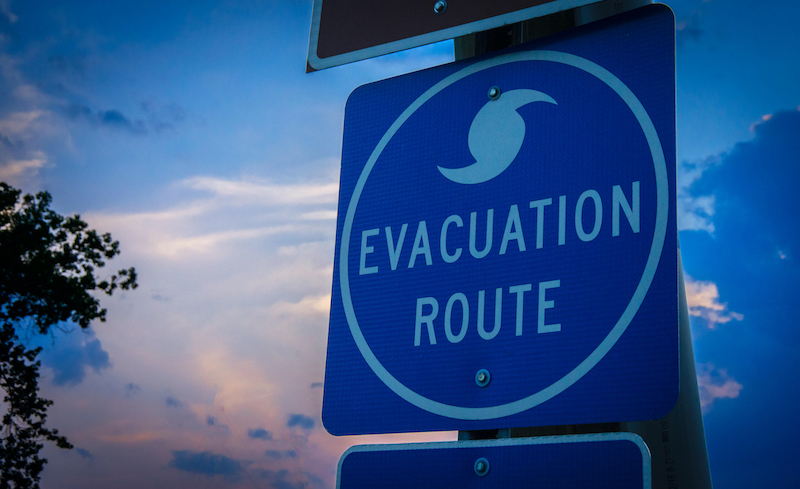Get Your Fleet Ready for Hurricane Season

As if fleet managers don’t have enough on their plate dealing with the ongoing impact of the COVID pandemic on their fleet operations, along comes the 2021 Atlantic hurricane season, which officially begins June 1 and runs through November 30.
According to the outlook released by the Colorado State University Tropical Meteorology Project, this upcoming season is expected to be more active than usual with 17 named storms, eight hurricanes, and four major hurricanes predicted.
Typically, the most damaging storms and hurricanes occur in August and September, but considering the unpredictability of weather, don’t bet your business on it. Just last season, tropical storm Bertha made landfall on May 27 before the season officially began. While far from the most damaging storm of the season, Bertha was hardly a spring shower — causing 125,000 people to evacuate from The Carolinas and Georgia, an estimated $250-$270 million in damages, and 12 deaths.
Prep Work Pays Off
Picking up the pieces and getting back to business as usual after a disaster like a hurricane or tropical storm, is never a sure thing. In fact, according to a report from the Federal Emergency Management Agency (FEMA), 40% of businesses don’t open following a disaster and 25% fail within one year. Prep work can help you avoid becoming a statistic.
Keeping your fleet running at full capacity, your customers serviced, and your employees safe is always first and foremost. But with the COVID impact on businesses this year, 100% uptime is more critical than ever before for the bottom line. All it takes is one storm to ground your fleet and potentially destroy your business. So preparation for hurricane season is imperative.
To that end, let’s look at preparations to make in three key areas that can pay off in lowering risk to your bottom line before, during, and after hurricane season.
Operations:
- Have a disaster plan and disaster recovery plan in place. Ensure your employees are trained to implement it and have a complete understanding of their role before, during, and after disaster strikes. Make sure to include a plan for a communication network via mobile phones, text alerts, Facebook, Twitter, etc.
- Ensure your team is trained on basic first-aid and CPR.
- Leverage routing software to identify emergency/alternate routes for drivers.
- If you do not have fleet tracking software, consider it. Real-time tracking gives you greater visibility into the whereabouts of your vehicles and drivers.
- Have methods for protecting office equipment such as computers, printers, landlines, etc.
- Stay on top of weather updates.
- Check that security and floodlighting are working.
- Patch roofs and windows where it is needed.
- Make sure your backup generator is in working order. If you do not have one, buying or renting one is a good idea. After disaster strikes, the odds of finding a generator are not in your favor.
- Keep an updated list of contacts you may need to connect with, such as key personnel, fuel providers, vehicle maintenance providers, insurance representatives, FEMA, and local law enforcement.
- Make sure your contact information has backups — a cell and landline number for each.
- Review insurance policies and coverage details. Take photographs of the interior and exterior of vehicles for potential insurance claims.
- Identify and protect vital records.
Fuel:
- Contact your fuel provider about your emergency plan for fuel, including fuel demand forecasting, pre-planning, and guaranteed fuel when conventional fuel is not available. It is critical to have a fuel plan in place before disaster strikes. When fuel demand is high, supplies are low, and without an emergency fuel plan, you risk your fleet being grounded and your generators non-operational.
- Check your fuel reserve and make sure it can last at least 72 hours — the average response time during emergencies according to FEMA.
- Prioritize the areas of your organization that need emergency fuel deliveries first so your most essential vehicles can get on the road quickly.
- Top off fuel for vehicles and equipment.
Drivers and Vehicles
- Have a plan for keeping vehicles safe and protected, such as moving them to higher ground or parking them in a protected shelter.
- Ensure drivers have stocked vehicles with bottled water and non-perishable food, rain gear, batteries, a flashlight, blankets, and a portable phone charger.
- Make sure preventative maintenance is up to date on your vehicles and if maintenance is performed in-house that you have plenty of parts and supplies.
- Instruct drivers to stay on top of National Weather Service and local weather alerts.
- Stress that drivers exit the road, pull over in a safe location (preferably higher ground), stay in the vehicle, and turn on flashers if conditions are too hazardous.
- Make sure drivers know to:
- Avoid flooded roads or moving water
- Slow down, turn off cruise control, and avoid sudden braking and turns to reduce the risk of hydroplaning
- Increase following distance
- Turn on headlights but not high beams
